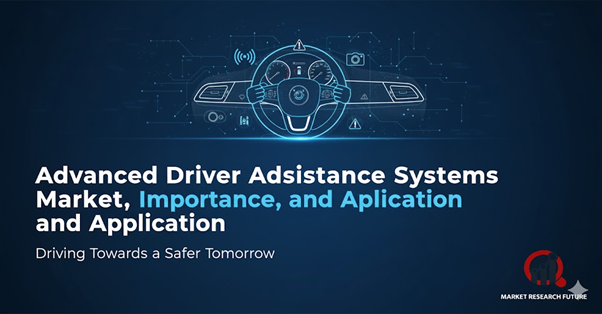The Rise of ADAS: Transforming Vehicle Safety and Automation

The ADAS Market Overview
The growing automotive sector has sparked the demand for advanced security systems, which has promised the valuation of the advanced driver assistance systems (ADAS) market by 2035 to be USD 122.23 billion, which was valued at USD 33.52 billion in 2024. The advancement of the sector is likely to occur at a CAGR of 12.48% through 2035.
Advanced Driver Assistance Systems (ADAS) are electronic technologies integrated into vehicles to enhance driving safety and comfort. The terms “ADAS” and “active safety” are often used interchangeably and may include a variety of automated safety features.
Beyond passenger vehicles, ADAS technologies are also widely used in commercial, agricultural, and military vehicles to improve safety and operational efficiency.
According to market analysis, human error is a leading cause of road accidents, and ADAS helps minimize these risks by using sensors such as cameras, radar, and ultrasonic devices to monitor the surroundings. These systems aim to reduce both the frequency and severity of accidents, ultimately preventing injuries and fatalities.
Importance of ADAS
Studies indicate that a vast majority of severe accidents occur due to human error, making ADAS a crucial innovation for modern transportation. Even basic systems, such as anti-lock braking (ABS), significantly improve vehicle safety.
Each ADAS feature is designed to assist drivers with timely alerts and corrective actions. For instance, autonomous emergency braking helps prevent collisions, while sensors and cameras enhance the driver’s situational awareness. These technologies encourage safer driving behavior and improve response time in critical situations.
Types of ADAS
- Passive ADAS Systems
A passive ADAS system monitors driving conditions and warns the driver about potential hazards, but does not take control of the vehicle.
- Provides real-time alerts through visual, auditory, or tactile feedback.
- Displays visual alerts on the dashboard or central console.
- Common features include lane departure warnings, collision alerts, and blind spot detection.
- Active ADAS Systems
An active ADAS system goes beyond warnings by automatically intervening to prevent or mitigate accidents.
- Automatic Emergency Braking (AEB) activates without driver input during imminent collisions.
- Features include lane-keeping assistance, adaptive cruise control, traffic jam assist, and lane centering.
- These technologies form the foundation for semi-autonomous and autonomous driving systems.
Applications of ADAS
- Adaptive Cruise Control
Adaptive Cruise Control (ACC) automatically adjusts a vehicle’s speed to maintain a safe distance from vehicles ahead. It is particularly useful on highways, reducing driver fatigue and improving safety during long trips.
- Pixel Light and Glare-Free High Beams
These intelligent lighting systems use sensors to detect other vehicles and adjust brightness automatically, ensuring optimal visibility without dazzling oncoming drivers.
- Parking Assistance
Automated parking systems use multiple sensors and cameras to assist drivers in maneuvering and parking safely. Some advanced systems can even park the car autonomously.
- Blind Spot Monitoring
Sensors continuously monitor areas not visible to the driver and issue alerts when another vehicle or obstacle enters these zones, preventing unsafe lane changes.
- Driver Drowsiness Detection
Driver monitoring systems detect fatigue or inattention through indicators such as head position, steering patterns, and eye movement. When signs of drowsiness appear, the system issues alerts, encouraging drivers to take a break.
Takeaway
According to market insights, ADAS has become a global standard feature in modern vehicles, integrated into most new automotive models. As cities transition toward smart mobility ecosystems, ADAS will increasingly interact with connected infrastructure, enhancing automation and safety.
This evolution marks a critical step toward the widespread adoption of autonomous driving technologies and safer transportation systems worldwide.